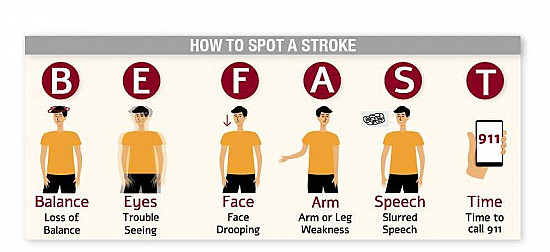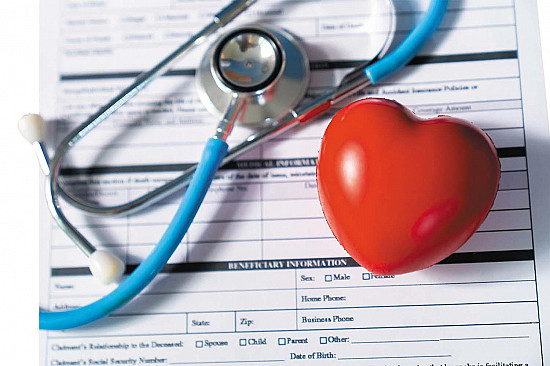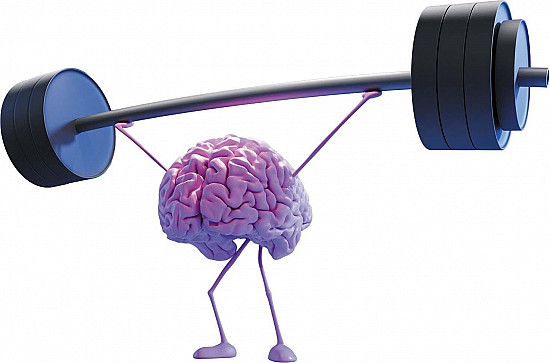Recognizing the most common warning signs of a stroke
Three telltale symptoms occur in 75% of all strokes, often in combination. Don't ignore them — even if they're short-lived.

Image: © American Heart/Thinkstock
Every 40 seconds, someone in the United States has a stroke. Also known as "brain attacks," strokes result from an injury to a blood vessel that limits blood flow to part of the brain. Rapid diagnosis and treatment can prevent potentially devastating disability or death — which is why everyone should know the common warning signs of a stroke.
In 2013, the American Stroke Association unveiled a stroke awareness campaign based on the mnemonic FAST. Around that the time, a national survey suggested that 28% of Americans didn't know any stroke symptoms, and nearly half weren't sure what to do if they experienced or witnessed the symptoms of a stroke. But four years later, things seem to be improving.
"The FAST campaign has had a positive impact by helping the public become more aware of stroke symptoms," says stroke specialist Dr. Christopher Anderson, assistant professor of neurology at Harvard Medical School. As far as memory aids go, FAST makes sense because the first three letters (which stand for Face, Arm, and Speech) cover the most stereotypical symptoms and together account for about 75% of the symptoms stroke patients experience. They're caused by strokes that occur in the large hemispheres in the front part of the brain, explains Dr. Anderson. Often, but not always, people have more than one symptom.
FAST enough?
Sometimes, people who are having a stroke experience leg weakness (which can cause balance or walking problems) or have trouble seeing (such as blurred or double vision). These less-common symptoms usually occur from strokes that occur in a smaller area in the back part of the brain. Some neurologists argue that adding two additional letters before FAST — B for balance and E for eyes — to make the mnemonic "BE-FAST" would help people recognize even more strokes.
But Dr. Anderson isn't sure that's a good idea, for a couple of reasons. First, in a moment of panic, it's not easy to quickly remember what four letters stand for, let alone two extra ones. Second, balance is a tricky sign because a lot of older people have balance problems now and then. Many other things, such as low blood pressure or inner ear problems, can cause dizziness or balance issues. When caused by a stroke, balance problems are often accompanied by other symptoms. "If you're having a stroke, your balance may be off, but one leg also feels heavy, or you can't see quite right," Dr. Anderson says. When those symptoms appear together, that's concerning and should be evaluated right away, he adds.
The eye symptoms can be elusive; they include blurred vision, seeing double, and trouble focusing. Sometimes a stroke cuts off part of the visual field. As a result, people can't judge the space around them, and they'll do things like bang their shoulder while walking through a doorway.
Short-lived symptoms: Still alarming
It's very important not to brush off short-lived stroke symptoms. They may represent a transient ischemic attack, or TIA — a temporary decrease in blood flow to the brain, sometimes called a ministroke.
"For instance, a woman might notice that while her husband was reading before bed, his arm got a little clumsy and he couldn't see right. But then it went away." Just because a symptom goes away doesn't mean it's not still scary, warns Dr. Anderson. A TIA is an important sign that something is wrong and could lead to a more serious stroke if not addressed.
Another classic scenario is a person who says, "That's funny, I can't feel one side of my mouth," and then their speech becomes garbled. Or a person might say, "I was cooking and I dropped the knife. I picked it right up, but then I dropped it again." In all of these instances, you should call 911 right away.
If you're calling for someone else, be sure to note the time you first noticed the symptoms, or when the person was "last seen well" without symptoms. The information can be vital for doctors, because the most common stroke treatment should be given within a certain time frame.
Disclaimer:
As a service to our readers, Harvard Health Publishing provides access to our library of archived content. Please note the date of last review or update on all articles.
No content on this site, regardless of date, should ever be used as a substitute for direct medical advice from your doctor or other qualified clinician.















